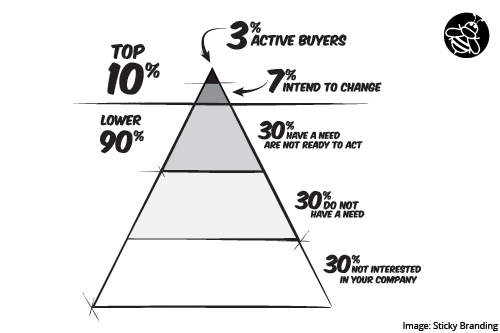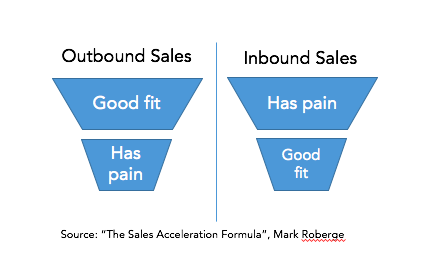Menu

Marketing, sales, and demand generation - they’re constantly changing. Companies will always have to navigate how to generate demand, pipeline and revenue amidst challenging external (and possibly internal!) situations.
How can one possibly keep up? Especially if you’re a startup founder or CEO. You’ve already got so much to juggle. Maybe demand gen is not your main superpower.
How should you approach demand gen in order to most effectively generate demand and grow pipeline and revenue?
I put together this playbook to help answer this question, and to explore the old vs. the new approach, based on multiple sources (cited at the end) plus my own experience.
There’s a general frustration coming from leadership and within sales and marketing departments. I'm hearing it. I'm reading it. I've lived it.
This playbook goes beyond the typical advice that “marketing needs to stop passing bad leads to sales” or “sales needs to stop blaming marketing for passing bad leads” or “marketing needs to take ownership of revenue.”
Before we jump in, let me bring up some key stats to help paint the picture of challenge and frustration.
Last year, I’ll admit I wasn’t really sure about the true difference between demand gen vs. lead gen. And to be honest, there was a point when I was heavily focused on lead gen simply because it was something we could more easily measure, and it tied into the inside sales team’s efforts.
So I asked a handful of marketers, and their answers were at worst “Eh? Same thing!” or at best very fuzzy explanations about the key differences.
I imagine there are others out there in the same boat.
Well, let’s draw the line in the sand, shall we?
Yes, I will stop using beach references.
Demand generation is based on marketing campaigns to create a demand or interest in your product or service. The goal is to build trust, increase brand recognition, and position your brand as the go-to within your industry. It’s also a long-term strategy that covers all stages of the buyer journey.
Lead generation is based on marketing campaigns to collect information about potential customers in order to turn them into leads. So you’re getting people to visit your website and you want them to submit their email to download a piece of content or to receive your newsletter - that’s lead gen. When you pull a contacts list and start cold email outreach, and some % of your list clicks on the CTA or responds to your email, and you send those people through to your inside sales team - that’s lead gen. Lead gen can be part of your overall demand gen strategy.
Lead gen will help you increase your email list or other "list". Demand gen will help you create more awareness and excitement in general, and nurture your prospects for when they’re ready to buy.
Because only 3% of your TAM (total addressable market) is ready to buy today. Your job is to help those people find you.
Case in point: one of my clients found me through a video podcast episode posted on LinkedIn. They had an immediate need, they saw me in that episode, they checked my profile/creds, we set up a discovery call, I wrote up a proposal and then a formal contract.
As you can see from the image below, most people are not ready to buy today. But give them some time. And the right nurturing program, of course.

I’m going to start off with the impact you’re likely looking for. If you’re serious about improving and modernizing your demand gen methodology, here are the results you’ll get:
What a dream, right?
Now let’s go back to how things used to be, how we’re still stuck in those old ways, and what we’re so frustrated about.
The old demand gen game is causing your company diminishing returns and slow growth because … so many reasons.
Raise your hand if you live in this demand gen THEN world:
The “conversation-ready” lead is the new standard for effective lead generation.
-Drift
Here’s a nice illustration showing the problem with marketing passing all leads to sales. Even though someone “has pain” (a need to learn more, wants to solve a particular problem, etc.) they may not be a good fit for what your company offers. They need to be qualified first.

Let’s stop the frustration. There’s a better way.
If you want to create marketing leverage and focus on repeatable growth and revenue vs. just vanity metrics and "leads", you must focus on doing these things instead:
Leads are those people that want to have a conversation with sales.
Your demand gen program is not based on that e-book or webinar or podcast episode you made, but based on the buying process and the WHY of the prospect. WHY would someone want to consume that content? e-Books and long form content to dive deep into a topic. Email newsletter + podcast + LinkedIn posts to get ideas and stay on top of trends.
Not leads focused, but rather CLV focused. Measure the outcomes, not just the activities. Activities (likes, comments, email opens, followers) are interesting and give you a general sense of if something is working or not. This information is also immediate (probably why people gravitate towards measuring them), while the latter takes time.
Here are the most important outcomes to include in your metrics:
With these focused metrics, you’ll get a better understanding of how effective your programs are over time, and where you may need to adjust your efforts.
Unlike the traditional funnel, you will no longer be focused on cost per lead or lead conversion rates (% of people that come to your website and are captured as leads), since the focus is on the outcome (revenue).
To engage, nurture and convert is a series of steps. Nurturing is often the most important AND the hardest / overlooked. In a 2020 Demand Gen Benchmark Survey of 150 B2B companies (50% software/tech companies):
Some content examples for the engage, nurture and convert stages include:
With cross-channel marketing, you're bringing each channel into unison with each other so that they build off of each other and amplify their impact to build a clear brand impression.
For example, if someone reads a blog post you wrote about the pitfalls of an issue that your business helps to solve, the marketing email they later receive might provide a customer testimonial from someone who overcame that same issue using your product.
Then, when the person gets on social media later that evening, they'll see an advertisement with a catchy headline about how your product or service completely removes the issue they were initially reading about.
On average, CRM data gets stale at 30% per year. WOW. It’s not a fun job, but someone’s gotta do it.
Lead scoring. Some companies use this when they need to prioritize which leads to follow up with first. Not sure that scoring and points matter, though, if you’ve agreed to pass conversation-ready, quality leads to sales. Instead of passing all leads to sales, marketing has to screen the leads and pass only the best to sales.
How do you screen leads? If you know your ICP and have focused parameters, you can call them and ask those few, important questions.
Buyer state also matters. You can customize the buyer’s experience based on the (assumed, then validated) buyer journey.
Let me explain.
Let’s say someone lands on your website, they’re intrigued. Ooh! They see an educational article about trends in their industry and decide to read it. Now they’re better able to frame some of their problems and challenges. If/when marketing or sales connects with them, they should reference educational collateral for buyers early in their journey.
Another person might land on your website and check out case studies or pricing right away. Sales would take a different approach here, offering up ROI data, other case studies, testimonials, reviews, etc. You may want to further customize this system based on the size of the company that’s coming inbound (e.g. for a larger company, sales would jump in sooner)
Here’s an example:
Marketing puts together a case study and deploys it through various channels (website, email, social, etc).
Sales sends an email or leaves a voicemail: “Hi Anna, great news! I know you’ve been using LinkedIn a lot more for your business. I was just talking to a customer that had enormous success with their LinkedIn strategy. I’m going to send that case study over to you now so you can see how they did it and the results they got. Call me if you’d like to talk it over. Bye!”
As a next step, sales suggests a free consultation. Maybe bring an internal expert to the call if it makes sense. This is a lovely, mirrored experience.
Oftentimes, you can’t immediately reach the decision-maker in an organization. The goal might be to develop trust with direct reports. Find out what questions they have, what challenges they’re facing, offer up some value. At the same time, call the decision maker as a follow-up (“I’ve been working with members of your team on the company’s demand gen strategy. One of our customers had great success with email, would you have some time to talk through what they did?”)
If you haven’t heard, LinkedIn is hot right now, and I imagine will continue to be for those that know how to leverage it. LinkedIn is a brand awareness channel, so you don’t necessarily need to measure the ROI of a single piece of content on there. Instead, you can do a temperature check, looking at qualitative feedback, comments, emails, where prospects and customers are reacting positively to the value you’re providing.
Transformation is hard. And I’ve heard this come up lately: having difficult conversations is hard. Creating alignment between marketing and sales and within the entire organization is hard. That’s probably why we’re not completely there yet. The communication is not there yet. The follow-up is not there yet. The repeatable results are not there yet.
Some other reasons:
Different marketers hold different beliefs. Some will try to convince you that lead gen is the way to play. Some will be die hard brand/storytelling experts. You’ll need to figure out what resonates most with your own company and marketing/sales philosophy.
When I started my own company, I decided that I’d be spreading the value more than asking for something. It’s just naturally me, I love to share knowledge.
That’s why I’d rather not use gated content and forms with 10 fields to qualify someone before I speak to them. It just seems so unnatural. Even though Hubspot told me to do it (sorry Hubspot, I still use and love your software). I’m just trying to spread the marketing education and learn from others along the way. That’s my philosophy.
When you ungate your content, your lead volume will go down, but the quality of sales conversations and sales velocity should go up. You should notice a cleaner pipeline and faster sales cycle once someone asks for a demo.
To be clear, there is nothing wrong with lead gen. There is nothing wrong with gating your content.
Just make sure that it’s part of your philosophy and that it’s working well for you.
Also make sure your lead gen is a part of your larger demand gen + brand marketing picture, and that you’re building both within your company.
Article sources include: Driving Demand (book), The Sales Acceleration Formula (book), and The ABM Conversations Podcast
Get startup marketing playbooks and insights delivered monthly.